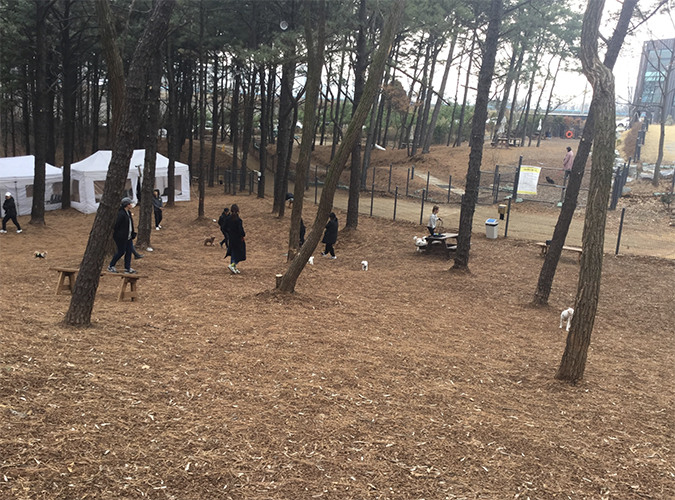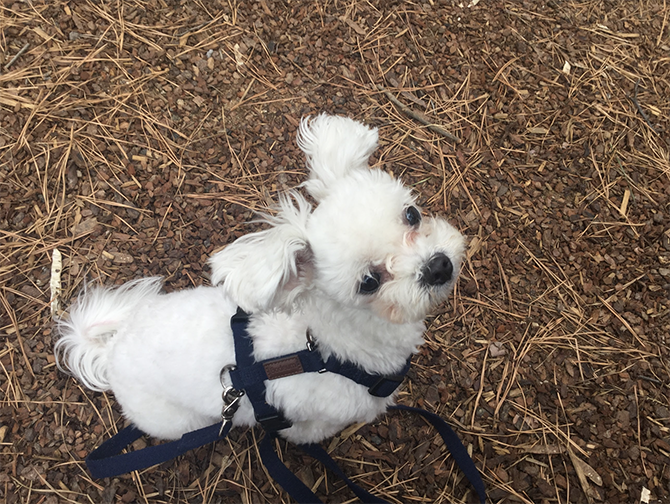It was Ung-jong Lee(이웅종) who first aroused interest in dog training in South Korea. He first became famous as he showed up in a popular TV program, Animal Farm. He is a handler who uses pressure in training. At the time, most people thought of training based on pressure when they heard dog training. Ung-jong Lee said dogs have to be punished if they take actions that the owner doesn’t want, and have to be rewarded if they take actions that the owner wants.
However, the society’s perspective toward dog training has changed since another dog trainer, Hunter Kang(강형욱, Hyung-uk Kang), became renowned. He is a trainer who trains dog based on positive education, training without punishments (혼내지 않아도, 혼나지 않아도 되는 반려견 교육 - 보듬컴퍼니 문구). Hunter Kang is sometimes called 'human trainer' because he teaches the owners, or guardians, to induce certain actions that they want from their dog. He became famous from a TV program named ‘There are no bad dogs (세상에 나쁜 개는 없다)’, leading the changes of dog culture in South Korea. For example, he emphasized the importance of walking dogs every single day, regardless of weather and season throughout the show, which was not a common notion. He runs a company named ‘Bodeum’ which means embracing in Korean. It is a dog’s education center in Namyangju, helping guardians and dogs solving problems, such as separation anxiety in dogs.

So, when should pressure training and positive training be used? How are they different? One of trainers in Bodeum said positive training can be effective in most cases while pressure training can cause serious side effects. One of the only times that positive trainers use pressure training is when a dog gets arrogant and aggressive, thinking they are the strongest because of the families who did everything the dog wanted. Then, trainers try to show that they are not scared of the dog even though the dog may growl or try to hurt the trainer. This does not give the dog physical pressure, but it belongs in pressure training. Again, a dog trainer has to oppress a dog which runs into a person to attack without a muzzle or a proper leash. This is a type of pressure giving to a dog but not training because it is for protection. Once a trainer oppresses a dog, the trainer cannot train the dog anymore. If the relationship between a dog and a trainer breaks, a training to recover the relationship is needed, which usually needs lot of effort and time. Therefore, it is better for the dog to be trained by others. Positive training can be effective to most types of dogs, including sensitive, aggressive, timid and injured dogs.
Then, what would be some advantages and disadvantages of pressure training and positive training? The trainer said pressure training can work in some cases that positive training cannot work. For example, he said there was a person wanted to stop his puppy biting his finger, wanting to play. The trainer in Bodeum said it is because the puppy is young and going through bruxism. However, he did not accept the trainer’s word and asked other pressure trainer. The pressure trainer said to hit or strangle every time the puppy tries to bite. He did, and the puppy stayed away from the person, not biting his fingers. However, as the puppy grew, it became aggressive whenever the person came nearby. The relationship between the two ended. However, the pressure training worked in this case, stopping the dog from biting the owner’s finger- It is impossible to stop the dog biting immediately using positive training.
One of the disadvantages of pressure training is that normal thinking is impossible when a dog gets lot of stress and pressure, which means the dog cannot learn anything. This is why pressure training causes many side effects. However, positive training has no side effects, and dogs learn fast. For example, there was a person who taught a dog hand signals by grabbing the dog’s hand. It took 40 minutes. Another person tried the same and found his dog running away and growling when he said hand. A way that positive trainers use teaching hand is by holding a snack in a hand, and moving it around. Then, when a dog tries to catch the hand and stop it, they reward the dog. This is how they teach hand signals. Also, using positive training, both a dog, dog owner, and a trainer do not need any kind of emotional exhaustion; the attachment between the dog and owner strengthens. Disadvantage of positive training might be that it is hard to put these in action. Positive training has to be a habit. The owner has to work for the dog every single day, requiring a lot of attention.

Even though dog training and perspective of it is changing, pressure training has not disappeared, and we cannot say that punishment education is always bad and positive education is always good. Dogs actually punish their own puppies when it is needed. They bite the puppies on the nose or mouse slightly, called ‘mouth punch’. However, it is impossible for humans to mock the action. Also dogs mostly do not understand why they are punished, which makes the dog to come to the conclusion that the guardian is weird. Hence it is important for all dog owners and trainers to utilize adequate methods to train dogs.

김도연 Lisa Doyeon Kim
12th
Seoul Scholar International
By 김도연 Lisa Doyeon Kim

